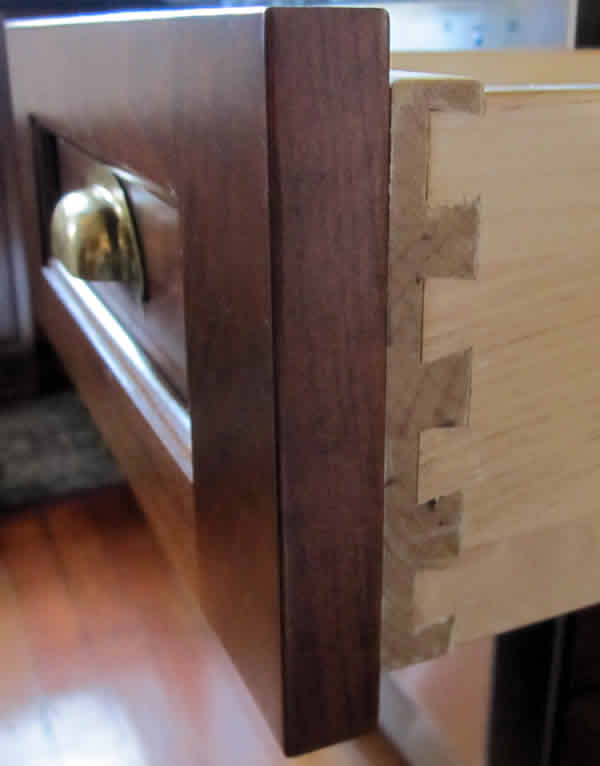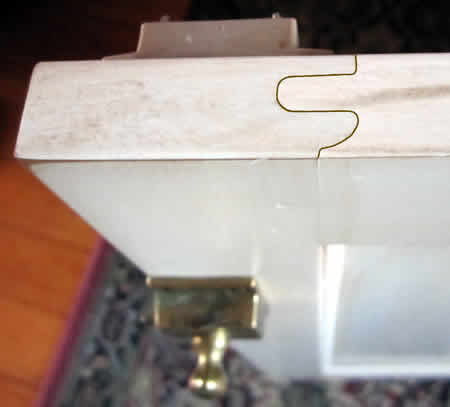How To Select Quality Kitchen Cabinets
Cabinets come in many price ranges, but price does not ensure quality. The price of cabinetry is influenced by the materials, the quality of construction, the type of wood, the features, the type of cabinet, the finish and substantially by whether the cabinet can be built in a production line or it is built to custom specifications. Many of these factors are simply a matter of consumer preference. However, quality does not go hand in hand with price. It is possible to purchase very expensive, custom cabinets of mediocre quality and very competitively priced cabinets of excellent quality. Knowing what to look for in cabinet quality can help you to get the most for your money.
What makes a quality cabinet?
Cabinet Casework
The most basic element of any cabinet is the casework, or the box. The sides, back and floor of a cabinet are very important for structural stability and resistance to damage. The material used for the case is almost never solid wood. Cabinet cases are built from Plywood, Medium Density Fiberboard (MDF) or Particle Board. Particle board is the least expensive and least durable of the three. It can be perfectly adequate, especially for the back of the cabinet. However, it does not resist water well and cracks easily when stressed. MDF is very durable, stable and is paintable. It resists water better than particle board and is much stronger. One drawback to MDF is that it tends to outgas formaldehyde (depending upon the manufacturing process) which can lead to health issues at worst or an unpleasant odor for some people. Plywood is the most durable material. Cabinet interiors can be plastic or film laminates or wood laminate. Wood laminates are the usually considered best looking and are the most durable. A cabinet that will have an exposed exterior side will usually match the cabinet fronts. Laminate plywood is the best quality choice for cabinet ends.
Joinery
Another sign of quality is the joinery or how the wood is fitted together. In casework, interlocking joints are much stronger than butt joints. A butt joint is simply two pieces of wood, butted together and held in place with some sort of fastener, such as staples. A better joint is a dado or rabbet joint in which one piece is fitted into a slot on a second piece. The slot provides mechanical strength and is usually additionally secured with glue and staples.
 Dovetail joint in a kitchen drawer box  Molding profile and partial tenon make this a solid joint |
It used to be a sure sign of quality if the drawer box used dovetail joints, small triangular interlocking fingers at the corners of the box. While still an excellent joint, production line construction now allows dovetail joints to be used as standard construction. A better way to judge a drawer is by the material used as the drawer bottom. Pressed wood will eventually sag when used as a drawer bottom. Plywood of about 1/8" thickness is better and it should fit into a slot in the drawer sides. In the old days, solid wood was used with the edges whittled down to a fraction of an inch to fit into a slot on the drawer sides.
Doors get a lot of use and abuse and so they should be well made. Butt joints in a door are the lowest quality. Doors should have a shape cut into the edge and the matching piece should have the reciprocal shape cut into the end. This joint creates a tighter lock than a butt joint. An even stronger joint is a mortise, where a protruding tenon of one piece is fitted into a mortise hole on the other. In most cases this type of joint is invisible but will be featured by the manufacturer as a quality feature.
On cabinets using face frames, butt joints are common. This is one place where butt joints are acceptable. Look for tight fits between pieces and mentions of pocket screws, dowel or biscuit joinery to hold the frame pieces together.
Hardware
Drawer slides, door hinges, knobs and pulls are components in all cabinets and can add a lot of expense. Stock cabinets tend to use basic quality hardware. The disadvantage to this hardware is primarily the feel and appearance. Low quality drawer slides can make a drawer feel rickety. Noise and ugly looks are also associated with cheaper hardware. Heavy-duty drawer slides, preferably full extension (so the back of the drawer is visible and accessible) are ideal.
Knobs and pulls usually will last the lifetime of the cabinets, so quality is less of an issue than appearance. If you don't like the selection of the knobs and pulls, consider selecting the cheapest option or asking to have them omitted. There are a huge range of choices for aftermarket knobs and pulls. One consideration is whether the hole pattern on the door or drawer will match the size of the pulls you select as a replacement.
Appearance
Most doors are constructed of four or more pieces plus the center panel. In production line operations, the pieces are all cut and randomly selected to assemble a door. The problem with this is that the variation in the appearance of each piece can be dramatic, resulting in a door that has a poor appearance. Even worse is that wood variation can result in dramatically different colors for stained wood. A door can end up with pieces of highly grained wood and plain wood along with colors ranging from very light to very dark. Quality construction will allow for selection of pieces that look similar, or even better, all door pieces for one door being cut from one single piece of wood.
The center panel can be made from plywood, particle board, MDF or solid wood. For stained doors with contours carved into the surface, solid wood is usually the best choice. In that case, look for panels that are assembled from fewer edge joined pieces. Too many pieces joined together result in uneven coloring and grain pattern. Painted doors hide the construction of the panel and so MDF is a suitable choice. For flat panel doors, plywood is the best choice.
Finish
Finishes include stain, paint, glaze, laminate and thermofoil. Laminates and thermofoil are the most prone to failure and are associated with lower cost cabinets. They can be perfectly adequate, but there is a greater chance of damage or deterioration. Wood laminates are common and better than plastic and film laminates. Stain, paint and glaze quality vary but there is no easy way to determine quality by inspection. The best way to find out about a cabinets long term appearance is to research for reviews from others who have purchased similar cabinets.





